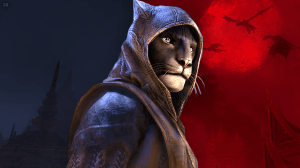10 Greatest John Romita Jr. Creative Runs
Videos by ComicBook.com
After working exclusively with Marvel Comics for more than 35 years, artist John Romita Jr., aka JRJR, made his official debut with the “Distinguished Competition” this week when he teamed-up with writer Geoff Johns to provide pencils for Superman #32.
While DC and Marvel have raided each other’s talent countless times over the years, the comic book industry was shocked earlier this year when DC announced that Romita Jr. had left the “House of Ideas” to illustrate Superman. Prior to Superman, the only DC hero JRJR had ever illustrated was Batman, as part of 1994’s Punisher/Batman: Deadly Knights crossover. Otherwise, Romita Jr. has illustrated almost every major Marvel superhero ever created, and has played a critical role in some of the greatest comic book runs in history, working with the likes of Roger Stern, David Michelinie, Mark Millar, J. Michael Straczynski and Chris Claremont.
Demonstrating the breadth of Romita Jr.’s Marvel career, this list celebrates his 10 greatest creative runs. It’s only a matter of time before we know where the Johns/JRJR Superman collaborative might rank, but given the track record of both creators, and the iconography of the “Man of Steel,” expectations should be high.
10. Marvel Super Hero Contest of Champions #1-3
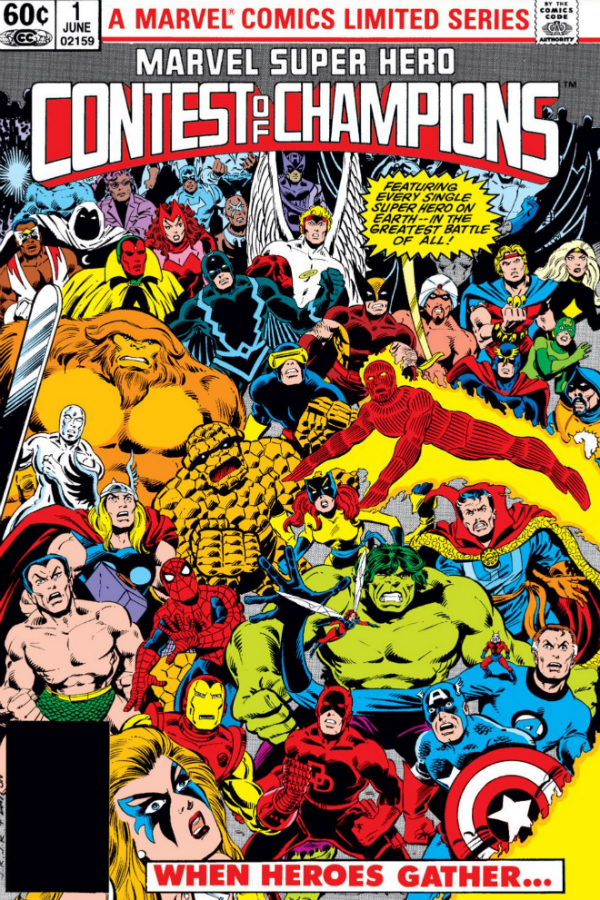
While this 1982 miniseries may not be very memorable for its story – the Grandmaster and Death use a bunch of Marvel heroes as champions to duke it out over the fate of the Collector – it is historically significant as it is the very first limited series that Marvel ever published. As such, Contest of Champions laid the groundwork for long-running miniseries like Secret Wars I and II, which in turn inspired the comic book industry’s “big event” mentality that is still very prevalent today.
Romita Jr. was still in the infancy of his career when he and Bob Layton provided pencils and inks respectively for Mark Gruenwald’s script. However, his three-issue Contest of Champions stint afforded him the opportunity to illustrate nearly every Marvel superhero of note from the early 80s, including pages that featured multiple heroes engaged in combat. By demonstrating such versatility and a knack to draw all of Marvel’s big names, Romita Jr. emerged as one of the industry’s rising stars after the mini was published.
9. The Punisher War Zone #1-8

Romita Jr.’s eight-issue stint on the early 1990s series, The Punisher War Zone, marked his return to a Marvel monthly series after a two-hear hiatus. And what a return it was. While JRJR’s style on books like Uncanny X-Men and Amazing Spider-Man was considered “edgy,” he and inker Klaus Janson worked on Punisher War Zone at a point when all of the glorious excesses of 90s comics were in full swing. That meant big guns, pouches, inordinately huge bicep and thigh muscles, and even more big guns.
Fortunately ,for bloodthirsty fans of Frank Castle – who was at the very peak of his popularity during the early 90s – Romita Jr., Janson and writer Chuck Dixon filled their eight issues of Punisher War Zone with copious amounts of bullets, explosions and dead mobsters. In one famous scene that would later be adapted for 2004’s Punisher film, Castle psyches out a crook by torturing him with an ice pop and telling him he’s searing his skin off with a blowtorch.
8. Wolverine #20-31 (vol. 3)

Like every major Marvel artist, JRJR would eventually get his chance to illustrate Wolverine. This 11-issue run on Wolverine’s solo title in 2003 was also significant since it was the first time Romita Jr., collaborated with legendary writer Mark Millar.
Together, Millar and JRJR created one of the best Wolverine solo stories to ever be published, “Enemy of the State.” In this arc, Wolverine is brainwashed by HYDRA and the Hand, changing him into one of the deadliest supervillains to ever inhabit the Marvel Universe. After the first six issues, Millar/Romita Jr. transition into the “Wolverine: Agent of S.H.I.E.L.D.” arc, which features a deprogrammed Logan getting his revenge on the Hand.
Romita Jr. got an opportunity to illustrate almost every “A” list hero Marvel had to offer over the arc – the X-Men, Fantastic Four, Daredevil and Nick Fury – and the storyline even teased the death of one of JRJR’s favorite heroes (Spider-Man). The arc also marked the first time Marvel dabbled with the “super run” concept – getting two iconic creators for a finite number of issues, a la what DC did with Jeph Loeb and Jim Lee on Batman: Hush.
7. Kick-Ass #1-8
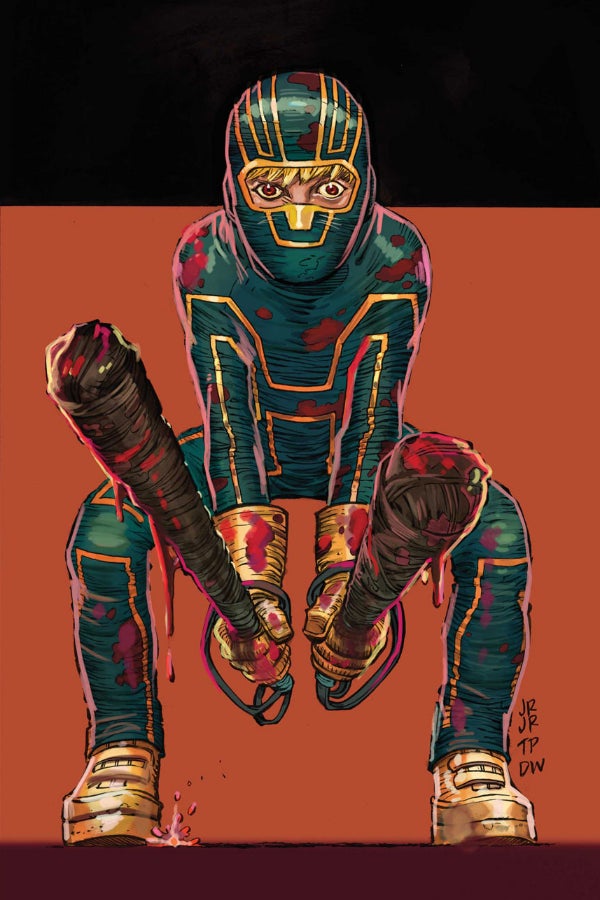
Romita Jr.’s first foray into creator-owned territory came with his 2004 Image Comics project, The Gray Area. But, by far, his most successful creator-owned series was published four years later by Marvel’s Icon imprint, Kick-Ass. JRJR teamed-up with writer Mark Millar to create the twisted, blood-soaked universe of teenagers Dave Lizewski and Hit-Girl. The series was later adapted into a 2010 film starring Nicholas Cage which also featured an animated sequence illustrated by Romita. The series inspired two comic book sequels, appropriately titled Kick-Ass 2 (which was adapted to the big screen in 2013) and Kick-Ass 3, and a spinoff title, Hit-Girl.
After working exclusively as a work-for-hire freelancer for years, JRJR has frequently talked about how liberating it was to co-create Kick-Ass with Millar.
6. Iron Man #115-117, 119-121, 123-128, 141-150, 152-156
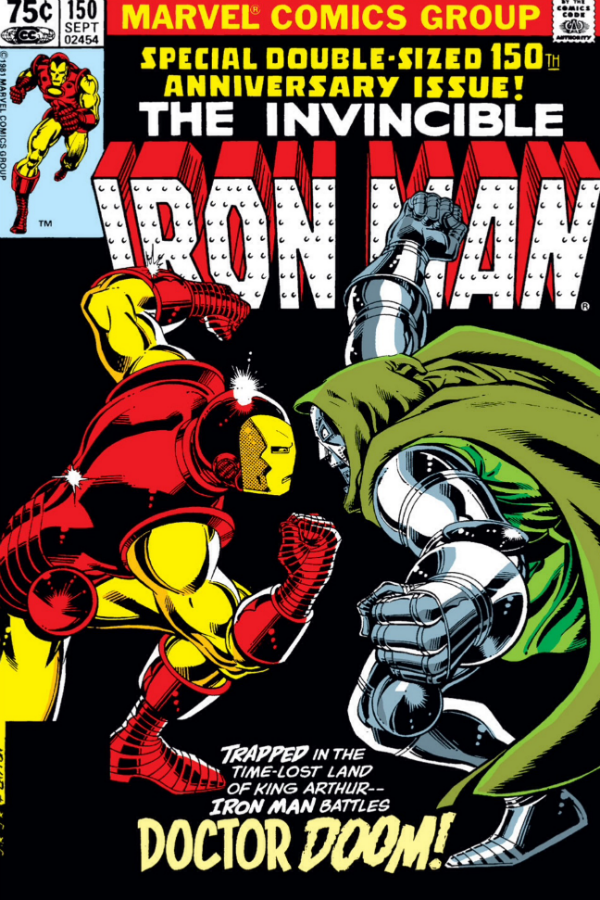
Romita Jr.’s first sustained run providing pencils for a comic book series was in the late 1970s with writer David Michelinie and writer/artist Bob Layton on Iron Man. The bulk of “Ol’ Shellhead’s” most famous storylines were produced by this creative team, including the groundbreaking “Demon in a Bottle” arc which saw Tony Stark deal with his alcoholism, and the fan-favorite “Doomquest,” which pitted Iron Man against Doctor Doom for the very first time (during Medieval Times no less). The run is also noteworthy for introducing a classic Iron Man rogue, industrialist Justin Hammer.
While Romita Jr., mostly performed breakdowns during this run, with Layton providing the finished artwork, the Iron Man assignment proved to be a significant stepping stone for JRJR’s then-burgeoning career. Without the critical and commercial success of the late 70s Michelinie/Layton/Romita Jr. run, Iron Man would have likely never been in a position to become a cinematic cornerstone for Marvel.
5. Daredevil #250-257, 259-263, 265-276, 278-282
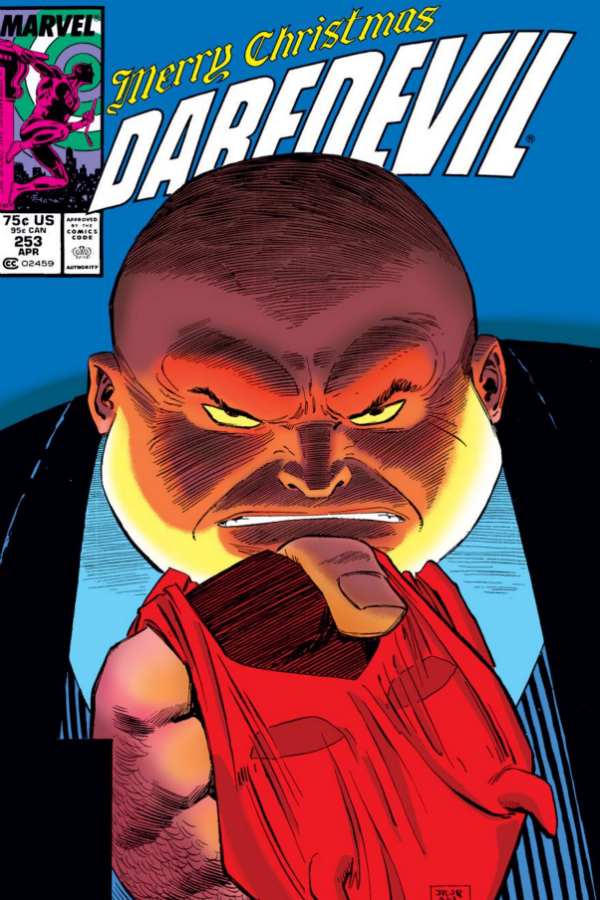
While the Anne Nocenti/John Romita Jr. run on Daredevil often gets overshadowed by the formidable Frank Miller years (including the Miller/David Mazzucchelli “Born Again” arc that immediately predeceded Nocenti/JRJR), Romita Jr., himself credits this work for his development as an artist. In a April 2007 issue of Back Pages, JRJR said his mid-to-late 80s Daredevil stint marked the first time he was allowed to provide full pencils instead of just breakdowns. He also had a very close working relationship with Nocenti, which allowed him to provide more input for plots than ever before.
As for JRJR’s actual output for Daredevil, his most famous artistic creation (with inks from Al Williamson) was the popular villain/Daredevil love interest, Typhoid Mary. As part of this long-running arc, Mary/Kingpin/Matt Murdock were embroiled in a love triangle where Mary was hired by Wilson Fisk to break Daredevil’s heart by making him fall in love with her only to reveal herself as the Kingpin’s hired assassin. Nocenti/Romita Jr. also created the demonic Blackheart as part of this run.
4. Amazing Spider-Man #30-58 (vol. 2), 500-508
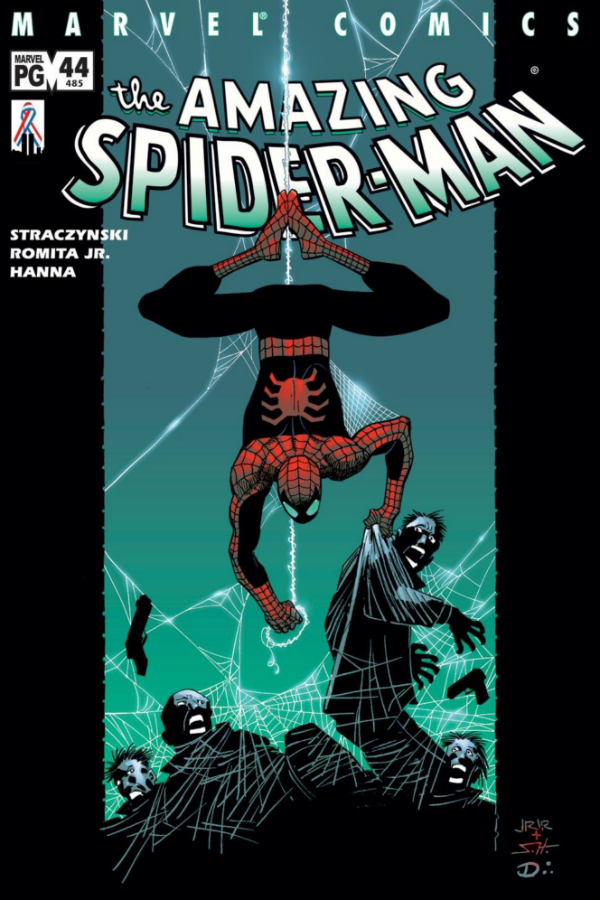
Romita Jr’s second stint providing pencils on the Amazing Spider-Man is considered by many to be one of the title’s greatest runs, which breathed new life into a franchise that was struggling both commercially and critically. JRJR was paired with renowned writer and Babylon 5 creator J. Michael Straczynski, giving the Amazing Spider-Man some sorely needed cache, as the duo set out to reinvent the titular character by exploring the spiritual origins of his powers and making his civilian alter ego, Peter Parker, a high school science teacher.
The opening arc of the JMS/JRJR run, the Eisner-award winning “Coming Home,” introduced the world to the vampiric Morlun (who will be featured later this year in the massive “Spider-Verse” event). In the midst of this storyline, the world was forever changed by the Sept. 11 terrorist attacks on New York, Washington, D.C. and Pennsylvania. JMS, JRJR and inker Scott Hanna, quickly assembled a Sept. 11 tribute, dubbed the “Black Issue,” now considered one of the most famous comics Marvel has ever produced.
Over the remainder of his collaboration with JMS, Romita Jr. illustrated a number of fan favorite, character-driven stories that added emotional depth and maturity to Peter’s relationships with his Aunt May and his wife, Mary Jane.
3. Uncanny X-Men #175-185, 187-197, 199-200, 202-203, 206-211
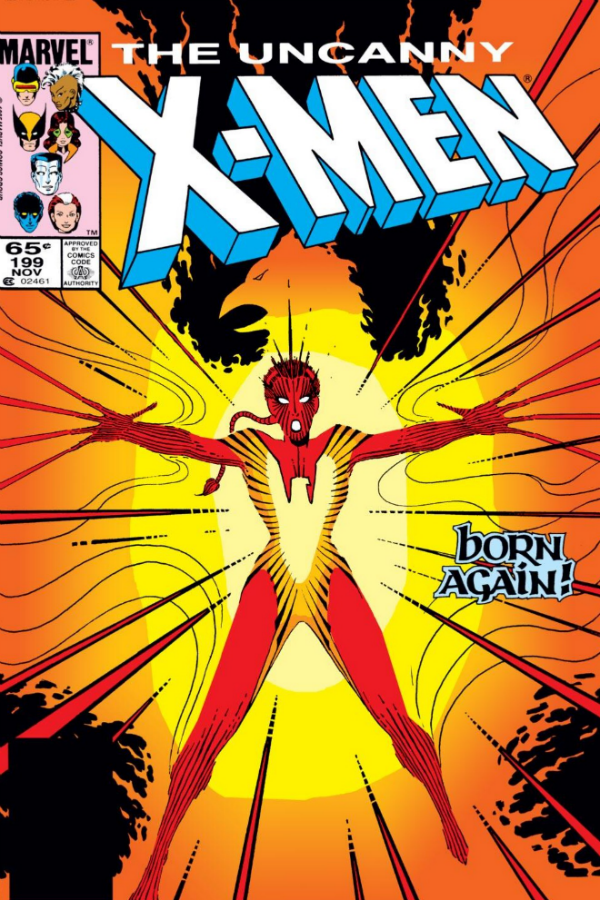
Despite Romita Jr’s success in the late 70s and early 80s illustrating such Marvel icons as Spider-Man and Iron Man, it was Romita’s stint on the extremely popular Uncanny X-Men series in the mid-1980s that truly launched his career into the stratosphere. At that point, Uncanny writer Chris Claremont was considered a star-maker for artists since anyone who worked with him (John Byrne, Dave Cockrum, Paul Smith) would be later deemed an irreplaceable industry icon.
Many fans considered JRJR’s run on Uncanny X-Men as the official transition from the classical era of Byrne, Cockrum and Smith, to a darker and grittier universe that would ultimately envelope the entire comic book industry by the early 1990s. Some of Claremont/JRJR’s best stories featured such moments as Magneto leading the X-Men and Professor X being brutally beaten by a mob. Claremont/JRJR also unveiled the technologically brilliant mutant Forge in Uncanny X-Men #184, a character that would go on to be a tragic love interest for fan favorite Storm.
2. Daredevil: Man Without Fear #1-5

Cited by Romita Jr. himself as some of his best work in comics, in 1993, JRJR collaborated with legendary writer Frank Miller and inker Al Williamson to create the Daredevil: Man Without Fear miniseries. This storyline reimagined Matt Murdock’s origin story by mixing in some of the key characters Miller either originally created or first integrated into the Daredevil universe like Stick, Elektra and Kingpin, during his famed writer-pencils run with Klaus Janson in the late 1970s/early 80s.
The mini is arguably better than Daredevil’s original origin story from the Silver Age, as it adds more nuances to the character by exploring the fine line between how a person chooses between being a hero or a villain. And the “new” characters that Miller and JRJR massage into the story work perfectly in terms of visual aesthetic and tone, making this mini the definitive take on the character’s early days.
From a production standpoint, Man Without Fear introduced some interesting challenges for Romita Jr. As it was being created, the story evolved from a 64-page graphic novel, to a 144-page graphic novel to a five-issue limited series. JRJR needed to provide new transitional pages for every iteration.
1. Amazing Spider-Man #208, 210-218, 223-227, 229-236, 238-250

Following in his father’s footsteps, in 1980, Romita Jr. began his first stint providing pencils for one of Marvel’s most iconic series, the Amazing Spider-Man (JRJR’s very first Marvel work was a “B” story in 1977’s Amazing Spider-Man Annual #11). About a year into his tenure on ASM, Romita Jr. started his universally loved collaboration with writer Roger Stern. Together, Stern and JRJR reinvented old school villains like the Vulture, added new dimensions to some of Spidey’s newer rogues like Tarantula and the Black Cat, and utilized characters traditionally associated with other superheroes like Cobra, Mister Hyde and the Juggernaut, with tremendous results. The two-part “Nothing Can Stop the Juggernaut” arc (Amazing Spider-Man #229-230), is universally accepted as one of the greatest Spider-Man stories of all-time, establishing the frequently-imitated template of Spider-Man overcoming all odds against a seemingly unbeatable foe.
But the biggest highlight of the Stern/JRJR run is arguably the debut of the Hobgoblin in Amazing Spider-Man #238. With the original Green Goblin (Norman Osborn) dead, and his son, Harry, no longer interested in following in his father’s footsteps, Stern wanted to create a new and improved Goblin villain. While Stern’s script was a standout, Romita Jr.’s pencils (with inks from his father) and layouts, which gradually depicted a mystery man getting into costume and assembling his weapons, before ultimately culminating with a beautiful splash page of the Hobgoblin, may be one of the greatest villain reveals in Marvel history.





